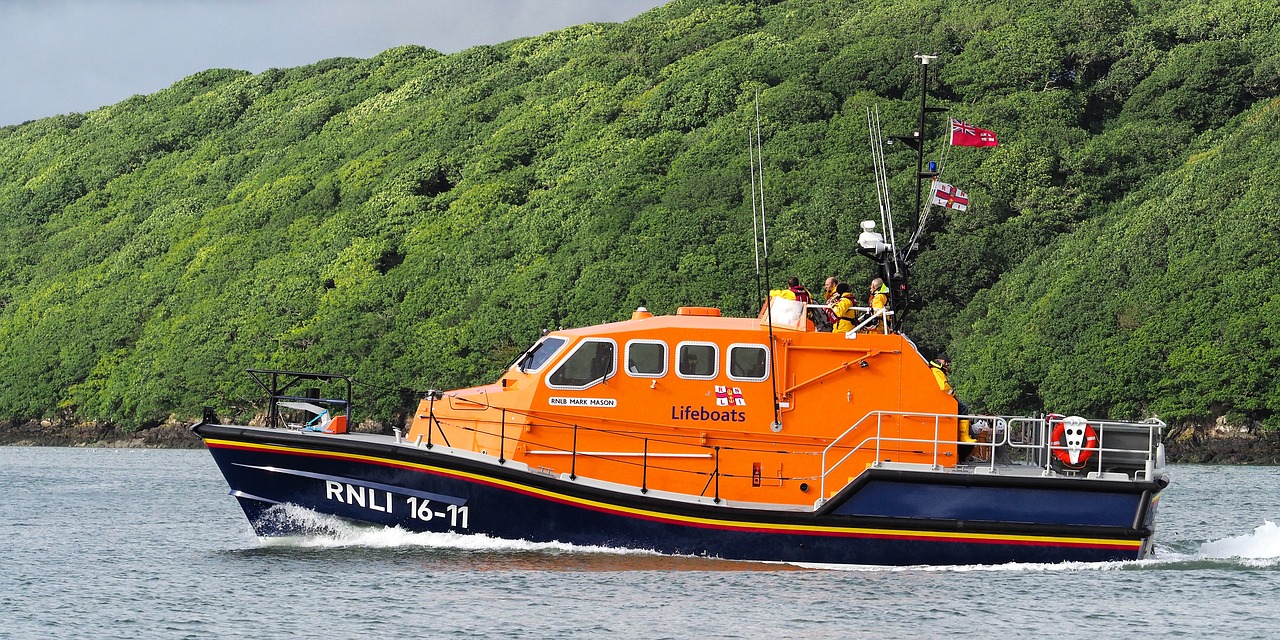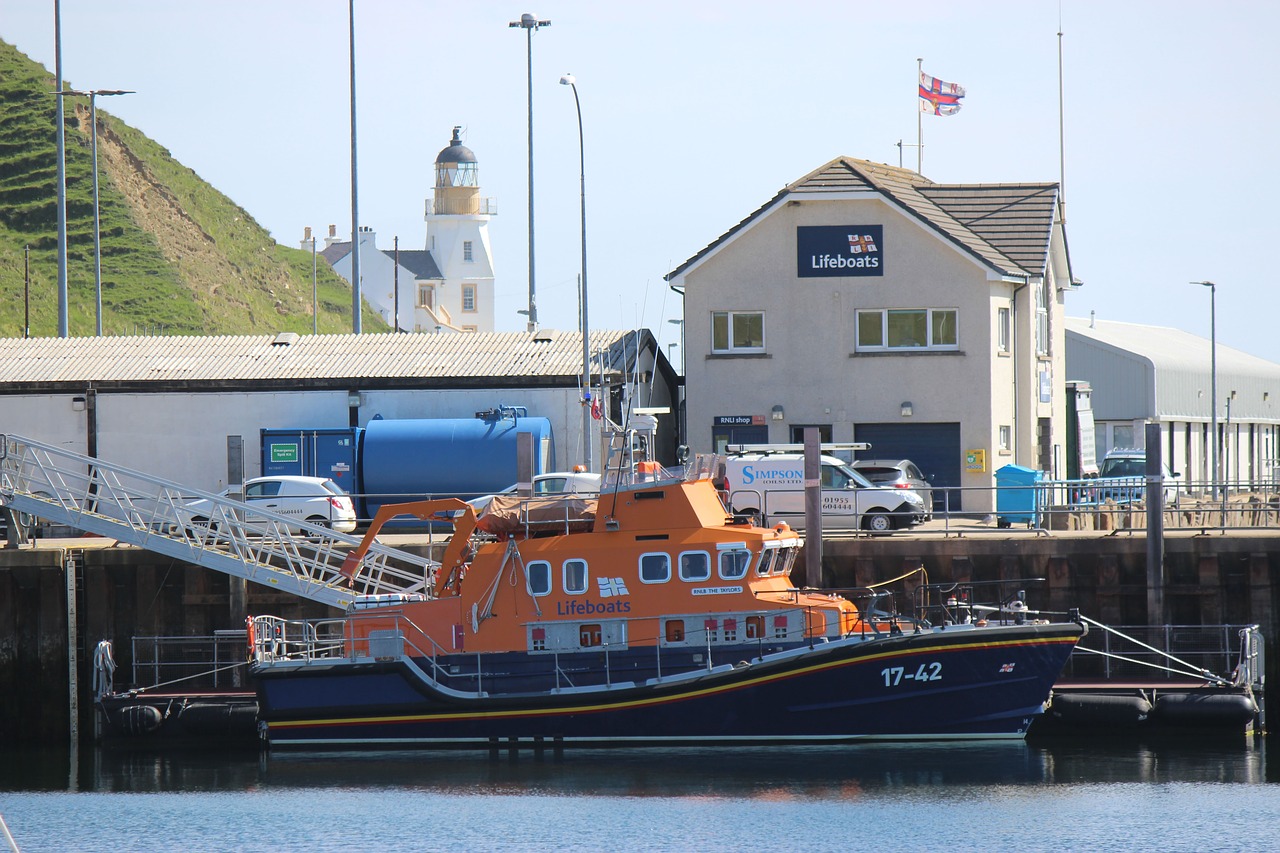Search and rescue (and seasick cats): How it Works interviews RNLI volunteer Andy Buck

In the latest issue of How it Works magazine, we investigated the technology and teams behind the lifesaving search and rescue teams of the United Kingdom. The Royal National Lifeboat Institution (RNLI) is the largest charity that saves lives at sea around the UK, the Republic of Ireland, the Channel Islands, and the Isle of Man. From searching for missing people to saving people from sinking ships, it’s estimated that the RNLI lifeboat crews have saved over 140, 000 lives since 1824.
The charity relies on volunteers, so we caught up with postman Andy Buck from Margate, who has volunteered with the RNLI for the last two and a half years.
Hi Andy! Could you tell us how you got into volunteering with Margate RNLI?
I have always lived in the area – I live just down the road – and would always watch the lifeboat go out. I had no experience but joined as a tractor driver, but the RNLI provide training. So I started off with that and then I decided to go on the boats.
How does it work, working full time and also volunteering? Are you here in your hours off?
We’re on call for the RNLI 24/7 unless we sign off to go out of the area, or on holiday. There’s no minimum commitment or anything, you just do what you can do. So you have to live and work within about five minutes of the boathouse.
There is a lot of people on the beach today, and it looks like windsurfers and people in small yachts are on the water. Is this your busiest time of the year?
It’s the first week of the summer holidays and a lot of people think lifeboats are busy in bad weather but generally, it’s not really the case, most of our shouts are in the summer. We average about 50 – 60 launches a year, and two-thirds of those are in the warmer months.
Is that because people are more active?

The RNLI relies on lifeboats and work closely with helicopter services to find missing people at sea
Yes, most of our shouts are to pleasure craft and people swimming and things rather than commercial vessels. They do have problems but they are generally much better covered due to maintenance regimes. It’s more often you have someone who has a boat that they take out in the summer, but they haven’t used it in the winter so when they take it out, it breaks down, or catches on fire.
What has been the most unusual call you have had since volunteering with RNLI?
We had a yacht out here, a motorboat with engine failure. We arrive, and it was a man that was living on the boat. I think he had come from Essex, but it was his permanent home, and he was doing a big sail around. And it was just this one man on the boat. With his pet dog. And his seasick cat. A very seasick cat.
Poor cat! What did you do?
We put a towline on and towed them back in.. I don’t know what happened to the cat. Our jobs are often quite standard, things like that, towjobs and searches are often called off when the person is found safe ashore. But it’s not always like that. Some of our callouts can be really awful. We’ve had missing people, and a suicide.
What’s the training like for searching for missing people at sea?
All of the training is provided by the RNLI, so you have everything, navigation training, chart navigations, electronic, casualty care, advanced first aid. They have boat handling, tractor training. The RNLI are great because they have their own college, a multi-million-pound collage.

The RNLI offers free training to young people on staying safe in the water
What happens when someone is reported as missing or in distress at sea?
The coastguard gets the 999 calls for a search and rescue. They decide the best course of action, they then phone our deputy launch authority, and they then decide what we’re going to do as a station. So are we going to send the big boat or small boat, or is it not something we’re able to do – maybe we don’t have enough crew or we can’t handle the weather with the small boat. They page us the plan, the crew come down, and get told what’s going on, we have a briefing, and then we’re off.
And when you reach them, do you bring them back to shore before starting casualty management or does that start at sea?
You start at sea, immediately, making sure the casualty is safe and can be moved. It all starts the moment you get there really, and you do it all on the boat on the way back, and you carry on at the boathouse if paramedics haven’t shown up.
What are your biggest challenges in a search and rescue operation at sea?
The main problem is knowing where you are in the ocean. If you are a casualty and you call the coastguard, they ask your position. And you’re just in the big blue sea, there are no landmarks. That’s a big problem. The other is the wind and tide. If we get the report that a ship has seen debris, even if they give us an exact location from their GPS. We have to work out what the tide and wind are doing to work out where that will drift, and how long it will take us to reach the location, to try to intercept it. It can be miles away by the time we get there.
That doesn’t sound an easy task. Is there specialist equipment on board to help you do that?
The big boat has radar, and VHF radio. The crews at RNLI can triangulate positions using onboard equipment when we get a distress call. We have electronic navigation systems, like on a car. And the waters around us have all been surveyed, all the sandbanks. The small one is obviously a stripped down version of the big boat so we still have the electronic navigation and the first aid kits.

The RNLI 24-hour search and rescue service operates from 238 lifeboat stations around the UK and Ireland
What’s your favourite part of volunteering?
It’s the crew – it brings together people who would never normally do anything other, we have a diverse mix of people, builders, carpenters, a funeral director, two paramedics, there’s a real mix. And it is all pulling together when jobs are hard so it’s looking out for each other. We don’t get paid for it. But we get a page at 3 am on a Saturday morning and the number of people who turn up in pyjamas or whatever. It is a great feeling.
What would you say to our younger readers who might be considering volunteering with RNLI?
You can join at 17 years old now – you’re never too far from a boathouse, have a tour, have a look around, they will offer you the advice if you want to join. Everyone is very friendly and accommodating, it’s not daunting at all. It is a great sense of community. You get to play on big boats, big tractors, get to go out in rough seas, knowing you are safe and have all the tech and training and equipment you could want. There’s a lot of adrenaline, and there are roles for everyone.
The RNLI relies on donations to keep saving lives at sea and reunite 23 loved ones with their family every day. Find out more here.
For more science and technology articles, pick up the latest copy of How It Works from all good retailers or from our website now. If you have a tablet or smartphone, you can also download the digital version onto your iOS or Android device. To make sure you never miss an issue of How It Works magazine, subscribe today!





